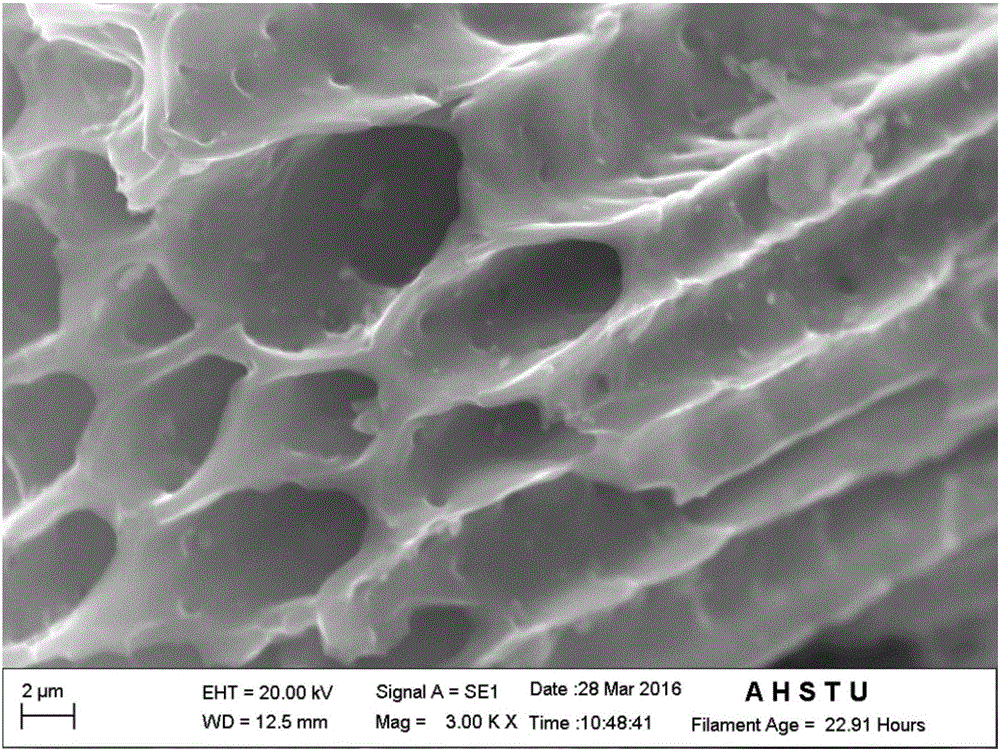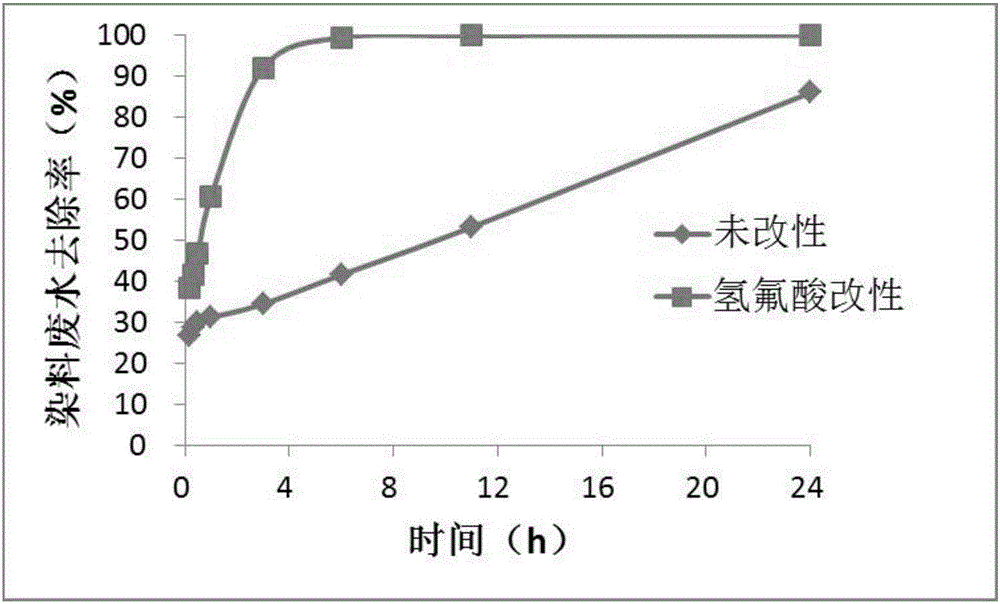Method of utilizing biochar for adsorbing orange II dye waste water and catalytically degrading the orange II dye waste water with persulfate
A dye wastewater, persulfate technology, applied in chemical instruments and methods, adsorbed water/sewage treatment, physical/chemical process catalysts, etc., can solve problems such as less biochar, and achieve enhanced removal effect, low cost, and abundant sources. Effect
- Summary
- Abstract
- Description
- Claims
- Application Information
AI Technical Summary
Problems solved by technology
Method used
Image
Examples
Embodiment 1
[0018] The method for utilizing biochar to adsorb and catalyze persulfate to degrade orange II dye wastewater comprises the following steps:
[0019] a) prepare biochar modified by hydrofluoric acid:
[0020] Add rice husk to a concentration of 0.2mol.L -1 In the hydrofluoric acid solution, the mass ratio of rice husk to hydrofluoric acid solution was 1:20, mixed and stirred for 12 hours, filtered, washed with distilled water to neutrality, and dried at 60°C to obtain modified biomass, modified rice husk biomass The substance is pyrolyzed at 300°C in a biochar preparation device (the application number is a biochar pyrolysis device disclosed in 201310082211.X) to obtain biochar;
[0021] b) Process of degrading orange II dye wastewater:
[0022] Mix persulfate with orange II dye wastewater, the molar ratio of persulfate and orange II dye wastewater is 20:1, add biochar into the mixed solution, the mass concentration of biochar is 10g.L -1 , so that the pH of the mixed solut...
Embodiment 2
[0025] The method for utilizing biochar to adsorb and catalyze persulfate to degrade orange II dye wastewater comprises the following steps:
[0026] a) prepare biochar modified by hydrofluoric acid:
[0027] Add rice husk to a concentration of 2mol.L -1 In the hydrofluoric acid solution, the mass ratio of rice husk to hydrofluoric acid solution is 1:200, mixed and stirred for 24 hours, filtered, washed with distilled water until neutral, and dried at 80°C to obtain modified biomass, modified rice husk biomass The substance is pyrolyzed at 500°C in a biochar preparation device (the application number is: a biochar pyrolysis device disclosed in 201310082211.X) to obtain biochar;
[0028] b) Process of degrading orange II dye wastewater:
[0029] Mix persulfate with orange II dye wastewater, the molar ratio of persulfate and orange II dye wastewater is 100:1, add biochar into the mixed solution, the mass concentration of biochar is 1g.L -1 , the pH of the mixed solution was 1...
Embodiment 3
[0033] The method for utilizing biochar to adsorb and catalyze persulfate to degrade orange II dye wastewater comprises the following steps:
[0034] a) prepare biochar modified by hydrofluoric acid:
[0035] Add rice husk to a concentration of 1mol.L -1 In the hydrofluoric acid solution, the mass ratio of rice husk to hydrofluoric acid solution was 1:100, mixed and stirred for 18 hours, filtered, washed with distilled water until neutral, and dried at 70°C to obtain modified biomass, modified rice husk biomass The substance is pyrolyzed at 400°C in a biochar preparation device (the application number is: a biochar pyrolysis device disclosed in 201310082211.X) to obtain biochar;
[0036] b) Process of degrading orange II dye wastewater:
[0037] Mix persulfate with orange II dye wastewater, the molar ratio of persulfate and orange II dye wastewater is 60:1, add biochar to the mixed solution, the mass concentration of biochar is 5g.L -1 , so that the pH of the mixed solution...
PUM
 Login to View More
Login to View More Abstract
Description
Claims
Application Information
 Login to View More
Login to View More - R&D
- Intellectual Property
- Life Sciences
- Materials
- Tech Scout
- Unparalleled Data Quality
- Higher Quality Content
- 60% Fewer Hallucinations
Browse by: Latest US Patents, China's latest patents, Technical Efficacy Thesaurus, Application Domain, Technology Topic, Popular Technical Reports.
© 2025 PatSnap. All rights reserved.Legal|Privacy policy|Modern Slavery Act Transparency Statement|Sitemap|About US| Contact US: help@patsnap.com


